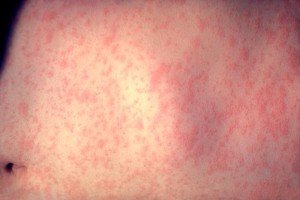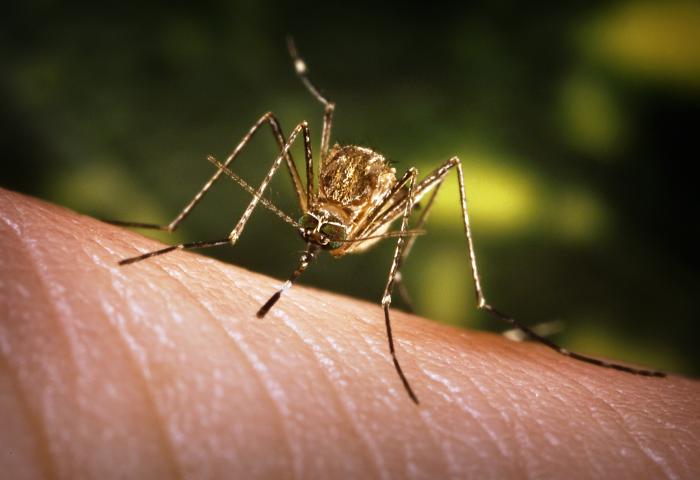Measles

Image/CDC
In the latest update from the Hellenic Centre for Disease Control and Prevention (KEELPNO) this week, officials now report since the beginning of 2017, 2591 measles cases, including three deaths.
The highest frequency has been observed in South Greece.
The outbreak mostly affects people of Greek nationality (mainly young Roma children, as well as Greek adults mainly aged 25-44 years old) susceptible to measles, among them healthcare professionals who were unvaccinated or partly vaccinated. More cases are expected to be laboratory confirmed in the near future, and an increase of cases as well as spread in other geographical areas cannot be excluded.
West Nile virus
According to findings presented at the 28th European Congress of Clinical Microbiology and Infectious Diseases this week by researchers from the University of Athens Medical School, West Nile virus (WNV) reemerged and spread to new territories of Greece in 2017 following a two-year hiatus in reported human cases.

During this reemergence, in the summer and early autumn of 2017, researchers diagnosed 45 cases from blood samples and cerebral spinal fluid from 180 patients who had symptoms and signs that probably indicated WNV. Prof. Athanassios Tsakris, who is head of the Microbiology Department at the University of Athens Medical School, and his team of researchers analysed the reemergence and presented the findings.
Save up to 40% off tours & activities in Paris
The researchers diagnosed 26 patients, or 57.8% of the new cases, with WNV neuroinvasive disease. They characterized the remaining 19 patients, or 42.2%, with WNV fever. The age of patients diagnosed with the neuroinvasive disease ranged from 15 to 91, with a median age of 63. Elderly patients with underlying diseases were particularly affected. Of the five patients who died (19.2% of those with neuroinvasive disease), all were older than 70.
All new cases emerged from southern Greece and most were reported in regions that had not been affected before. Of the 45 confirmed cases, 40 were in new territories: 37 in Argos and three in Corinthia prefecture. One case was reported in Crete and the remaining four were reported from previously affected prefectures of northwestern Peloponnese. Researchers analysed geographical data of the areas affected by the virus and concluded that Greece’s landscape, such as natural and constructed wetlands, seem to influence the transmission and rate of new cases.
Prof. Tsakris says: “The reemergence of WNV after a two-year hiatus of reported human cases and its subsequent geographic expansion in newly affected areas demonstrates that Greece provides the appropriate ecological and climatic conditions for WNV circulation. The virus has been established in Greece and disease transmission may continue in the future.”
Related:
- Mosquito control: Using drones to release sterile mosquitoes
- Tampon use continues to be associated with menstrual toxic shock syndrome: Study
- Measles vaccine shipment arrives in Ukraine
- Candida auris outbreak linked to multi-use thermometers in UK ICU
- Measles serious threat for babies, toddlers, unvaccinated youths: ECDC
- Rabies: WHO report provides updated guidance on the multiple facets of prevention, control and elimination
- FDA authorizes new use of test, first to identify the emerging pathogen Candida auris


What are the symtems of West Nile Virus ? My family just returned from Greece one is in A&E the other three are in bed with sikness and flu symptoms. The one in A&E has pneumonea and increased hart rate. Any advice much appreciated